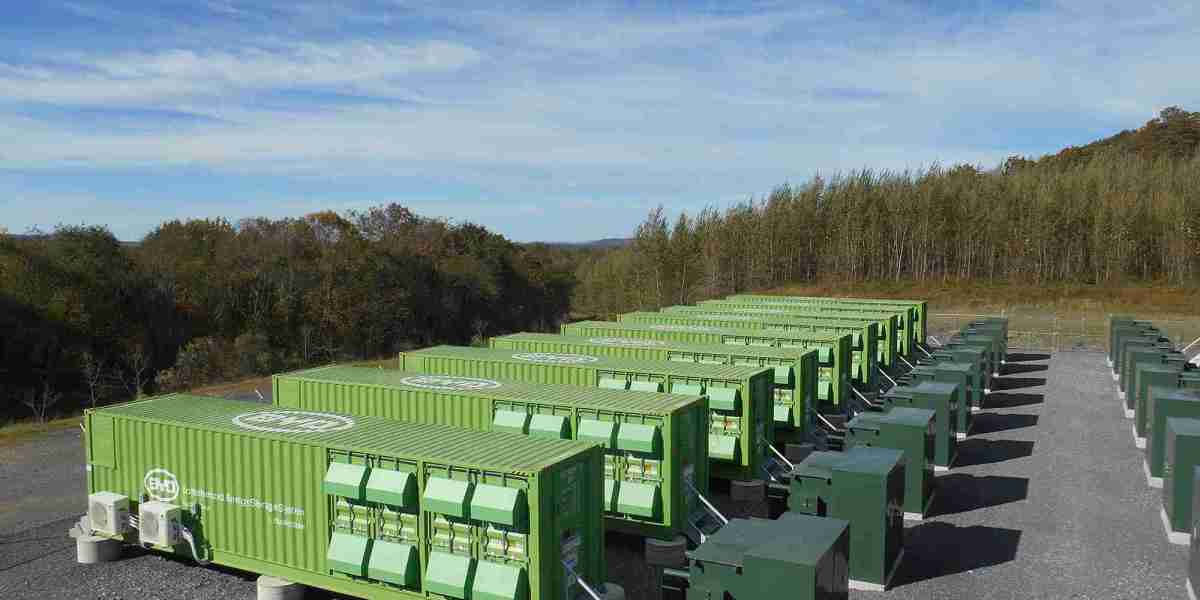The Battery Energy Storage System (BESS) market is undergoing significant growth, driven by continuous advancements in battery life cycle and energy density. These developments are crucial in improving the performance, efficiency, and affordability of energy storage systems, particularly as renewable energy sources like solar and wind play an increasingly larger role in the global power grid. Enhanced battery technologies are making it easier to store and utilize energy effectively, ensuring grid stability and supporting a sustainable energy future.
Enhancing Battery Life Cycle for Longevity
A major trend in the BESS market is the improvement in battery life cycle, which is the number of charge and discharge cycles a battery can endure before its capacity begins to degrade. Longer-lasting batteries are more cost-effective, as they require fewer replacements and lower maintenance costs, making them a better investment for residential, commercial, and utility-scale applications.
Lithium-Ion Advancements: Lithium-ion (Li-ion) batteries have been at the forefront of these improvements. New battery chemistries, such as Nickel Manganese Cobalt (NMC) and Lithium Iron Phosphate (LFP), are designed to offer enhanced cycle life, making them ideal for long-term, large-scale energy storage.
Battery Management Systems (BMS): Another key factor in improving battery life is the integration of advanced Battery Management Systems (BMS). BMS helps optimize battery performance by regulating charging and discharging cycles, ensuring that batteries are not overcharged or discharged excessively, thus extending their overall lifespan.
The longer battery life not only reduces the cost of ownership but also ensures the reliability of energy storage systems, whether used in residential solar-plus-storage systems or large-scale grid applications.
Increasing Energy Density for Greater Efficiency
Energy density, which refers to the amount of energy a battery can store per unit of weight or volume, is another critical development in BESS technology. The higher the energy density, the more efficient the storage system, as more energy can be stored in smaller, lighter batteries.
Lithium-Ion Improvements: Advances in lithium-ion technology continue to improve energy density. The use of silicon-based anodes instead of traditional graphite increases the amount of energy that can be stored in each battery without increasing its size, making energy storage systems more compact and efficient.
Solid-State Batteries: Solid-state batteries are another emerging technology that promises even higher energy densities. These batteries replace the liquid electrolyte found in conventional batteries with a solid electrolyte, which allows for greater energy storage in a smaller space. While solid-state batteries are still in development, they hold the potential to revolutionize both stationary energy storage and electric vehicle (EV) markets.
Utility-Scale Applications: The improved energy density of batteries is particularly beneficial for utility-scale applications, where large volumes of energy need to be stored to ensure grid stability. Higher energy density batteries can store more power in smaller spaces, reducing the need for large, costly battery arrays.
Impact on the BESS Market
The improvements in battery life cycle and energy density are transforming the BESS market by making energy storage systems more affordable, efficient, and reliable. These advancements are leading to several key market shifts:
Cost Reduction: Longer-lasting and more energy-dense batteries reduce both operational and capital costs. Consumers benefit from fewer replacements and lower installation costs, while utilities can deploy larger, more efficient energy storage systems.
Broader Adoption: As battery technologies improve, the adoption of energy storage solutions is expanding across residential, commercial, and industrial sectors. Consumers are increasingly installing solar-plus-storage systems, while businesses are investing in energy storage to reduce electricity costs and improve grid resilience.
Grid Stability: Energy storage systems with higher energy density and longer life cycles help improve grid stability by storing excess energy generated from renewable sources during periods of low demand and releasing it when demand peaks. This helps balance supply and demand, reducing reliance on fossil-fuel power plants and supporting the integration of more renewable energy.
Sustainability: BESS plays a critical role in supporting the global transition to clean energy by storing renewable energy efficiently. As renewable sources like wind and solar are intermittent, energy storage systems ensure that this power is available when needed, contributing to a sustainable and low-carbon energy grid.
Future Outlook
The future of the BESS market looks promising as continued advancements in solid-state batteries, energy management systems, and smart grid technologies will further enhance the performance and efficiency of energy storage systems. As renewable energy adoption increases globally, the demand for energy storage solutions will continue to grow, making the role of BESS even more critical in ensuring a reliable, sustainable energy future.
Conclusion
The Battery Energy Storage System (BESS) market is evolving rapidly due to key improvements in battery life cycle and energy density. These advancements are driving the adoption of more efficient, affordable, and reliable energy storage solutions across multiple sectors. As battery technology continues to improve, BESS will play a vital role in integrating renewable energy sources, enhancing grid stability, and supporting the transition to a sustainable, low-carbon energy future.




